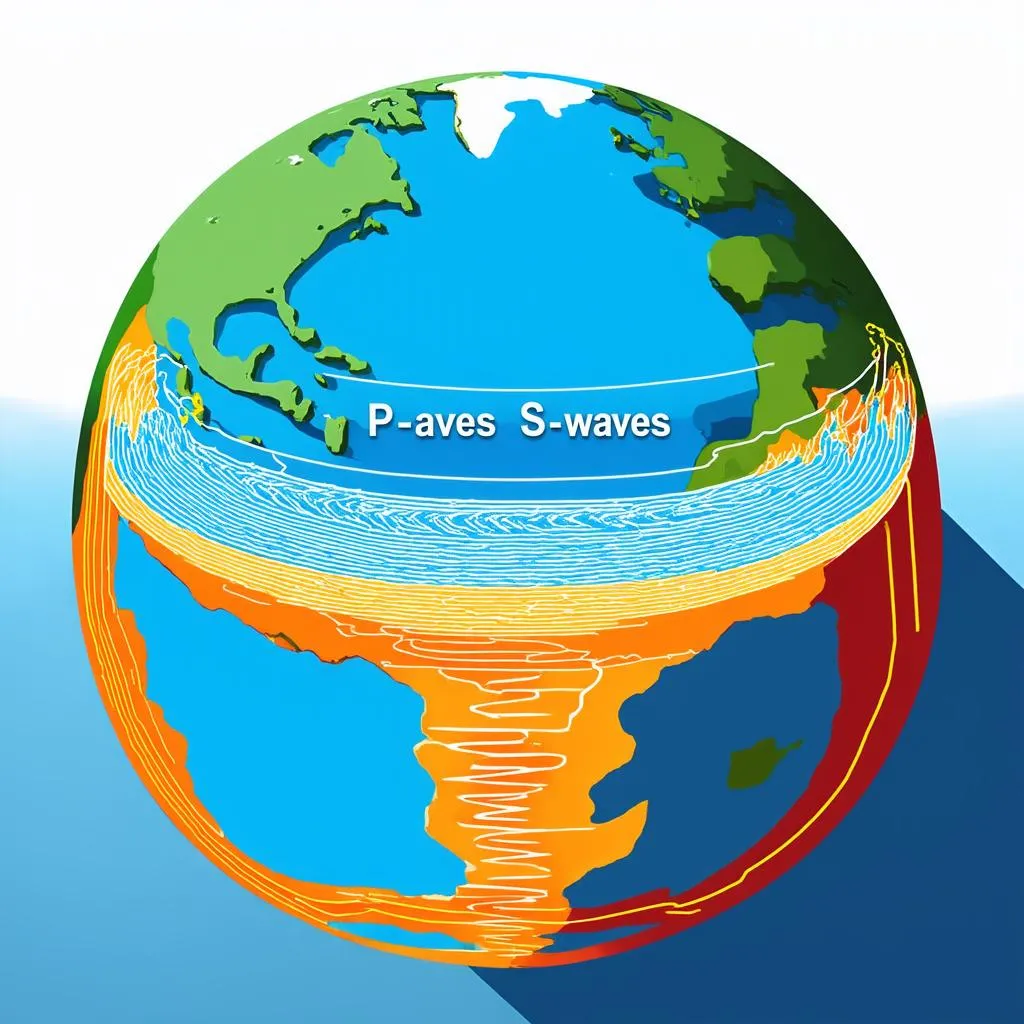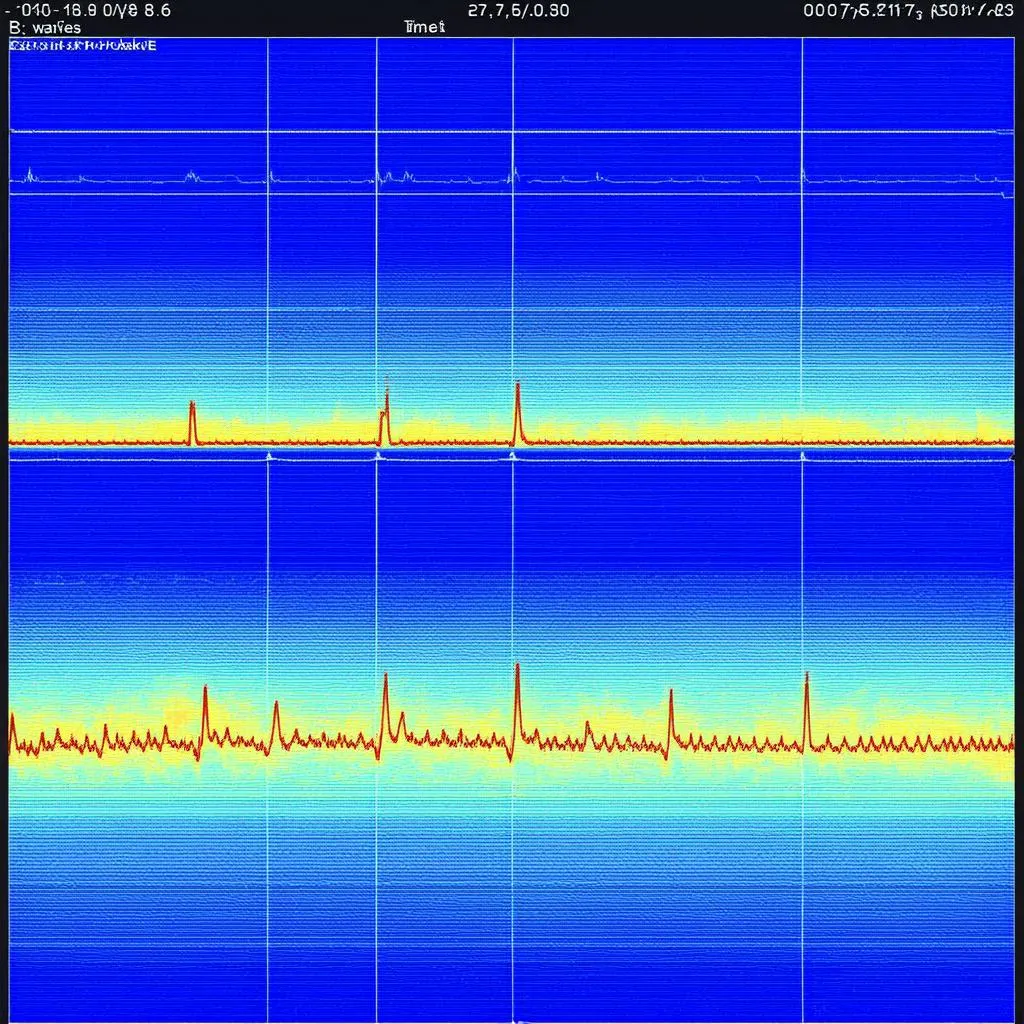Have you ever felt the ground shake beneath your feet? Perhaps you were lucky enough to experience a minor tremor, or maybe you’ve lived through something more intense. Earthquakes, those powerful forces of nature, have fascinated and terrified humanity for centuries. But have you ever stopped to wonder just how fast these tremors travel through the Earth? Let’s dive into the fascinating world of seismology and uncover the speed of these seismic waves.
Unraveling the Speed of Earthquakes
When we talk about the speed of an earthquake, we’re actually talking about the speed of seismic waves. These waves are the vibrations that radiate out from the earthquake’s source, known as the hypocenter. Similar to how ripples spread through a pond after you toss in a pebble, seismic waves travel through the Earth’s interior and across its surface.
There are two main types of seismic waves that determine an earthquake’s speed:
1. Primary Waves (P-waves)
- Fastest seismic waves, traveling at speeds between 4-8 kilometers per second (km/s) in the Earth’s crust. Imagine driving from New York City to Philadelphia in less than a minute!
- Compressional waves, meaning they move by squeezing and stretching the rock in the direction they’re traveling, much like a slinky toy.
- Can travel through solids, liquids, and gases, allowing them to pass through the Earth’s core.
2. Secondary Waves (S-waves)
- Slower than P-waves, traveling at speeds around 2-5 km/s in the Earth’s crust.
- Shear waves, meaning they move by shaking the particles perpendicular to the direction they’re traveling, similar to the motion of a rope being flicked.
- Can only travel through solids, which prevents them from passing through the Earth’s liquid outer core.
 Earthquake Waves
Earthquake Waves
Factors Influencing Earthquake Wave Speed
The speed at which these seismic waves travel isn’t constant. Several factors influence their velocity, including:
- Rock Density: Waves travel faster through denser materials.
- Rock Temperature: Higher temperatures generally mean faster wave speeds.
- Rock Type: Different types of rocks, like granite or sedimentary rock, affect wave speed due to their varying compositions.
Measuring Earthquake Speed and Location
Seismologists use instruments called seismographs to detect and record seismic waves. By analyzing the arrival times of P-waves and S-waves at different seismograph stations around the world, scientists can pinpoint the earthquake’s epicenter (the point on the Earth’s surface directly above the hypocenter) and determine its magnitude.
 Seismograph Reading
Seismograph Reading
The Impact of Earthquake Speed
Understanding the speed of earthquake waves is crucial for:
- Earthquake Early Warning Systems: By detecting the faster P-waves, these systems can provide a few precious seconds of warning before the arrival of the more destructive S-waves and surface waves. This brief window can be life-saving, allowing people to take cover and automated systems to shut down critical infrastructure.
- Building Design and Safety: Engineers use knowledge of seismic wave behavior to design earthquake-resistant structures that can withstand the intense shaking, minimizing damage and saving lives.
Travel and Earthquake Safety
While we can’t predict earthquakes, understanding their power and speed underscores the importance of being prepared, especially when traveling to earthquake-prone areas. Familiarize yourself with safety procedures, locate designated evacuation routes, and consider packing an emergency kit. Resources like the travelcar.edu.vn website can provide valuable information on earthquake preparedness and travel safety tips.
FAQs About Earthquake Speed
- Can earthquakes travel faster than the speed of sound? While seismic waves travel incredibly fast, they don’t surpass the speed of sound in air (approximately 343 meters per second). However, within certain layers of the Earth, P-waves can indeed travel faster than the speed of sound in those specific materials.
- Do deeper earthquakes travel faster? Generally, seismic waves from deeper earthquakes tend to travel faster due to the higher density and pressure of the surrounding rocks.
Conclusion
Earthquakes are a powerful reminder of the dynamic forces constantly shaping our planet. Understanding the speed of seismic waves is essential for mitigating their impact and enhancing our preparedness. By staying informed and taking appropriate safety measures, we can navigate the challenges posed by these natural phenomena.
We encourage you to share your thoughts and experiences in the comments below. For further insights on earthquake safety and travel tips, explore more resources on travelcar.edu.vn.